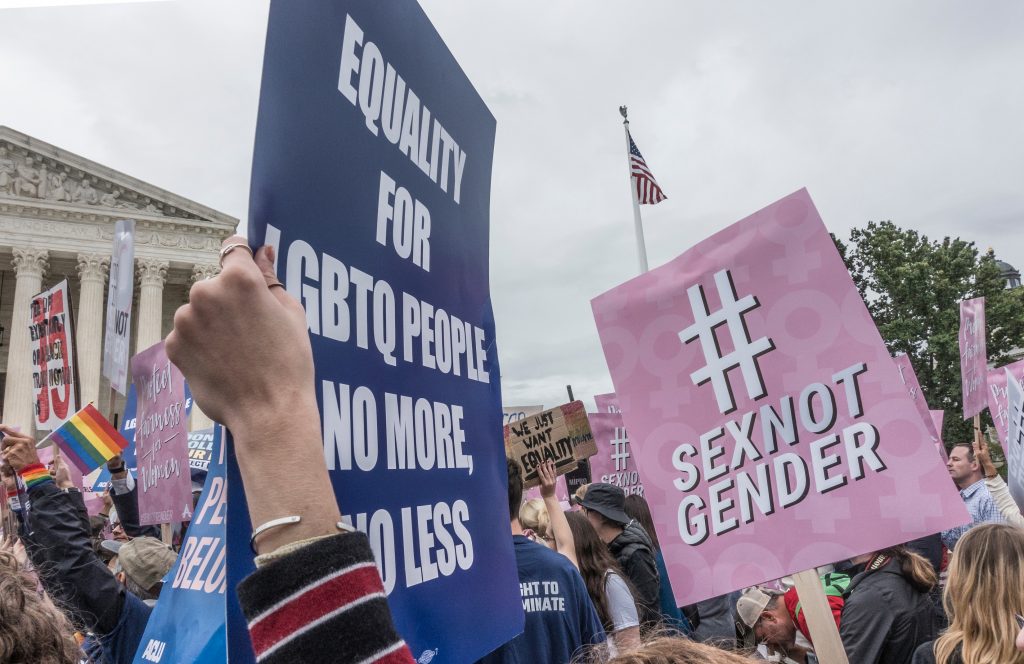The recent U.S. Supreme Court decision in Bostock v. Clayton was an earthquake, a legal and cultural temblor of a magnitude in the range of that of Roe v. Wade.
It may, in fact, have consequences even graver than Roe’s normalizing of abortion. By legally changing the definition of “sex” to include gender identity, the court in Bostock struck a blow at all the ways our society exalts, protects, and promotes the natural family.
Even worse, it struck at the root of a science-based concept of the human person. It did away with the commonsense understanding (shared by every culture in every age) that human beings are either male or female. And this in a scientific age that has cracked the DNA code of the human genome, in which our Y and X chromosomes are visibly at work to make each of us men or women from head to toe.
As Catholics, our first reaction may be fear, as we wonder how long we will have the liberty to educate our children and run our hospitals and parishes in a way that promotes a sane human anthropology.
But instead of fear, we should look at this latest development with confidence: After spending the last 2,000 years successfully beating back errors and heresies with aplomb, the Church is well equipped to rise above this newest iteration in triumph.
It’s all in Church history. Whether meeting the hedonism of pagan Greece, the pessimism of the Manicheans, the false reasonableness of Arius, or the lethal simplification of Islam, the Church has always found its voice and then stood firm.
It has never been a simple process, or instantaneous. It’s taken decades (or centuries) of long study, meetings of sage heads in councils, and vigorous argument so that the Church could, over two millennia, successfully confront every fad that threatened man’s understanding of God and of man as God’s creature.
It does this armed with that precious weapon called truth, clarified and sharpened through battle with error. When it was necessary, the Church even took up arms against the darkness, as in the Crusades, in which Christians of every walk of life flocked to beat back Islam when it was close to exterminating Christendom.
The Catholic Church in the U.S. continued the tradition after Roe. The first Christians had astounded the pagans with their concern for infants, and the way they resisted the entirely accepted custom of exposure and direct killing of “useless” offspring.
Hundreds of years later our Western societies had learned to automatically grant personhood to infants, born and unborn. Roe suddenly yanked that concept away, replacing it with the absolute right of the mother to end her child’s life according to her needs or desires. What was needed was a counterattack to the reborn heresy that infant lives don’t matter.
The Church (especially the lay faithful) responded to the battle call. Decades later, there is not a single Catholic that has not heard, and been made to understand, that human life, and worth, begins at conception.
Through catechesis, lay organizations devoted to promoting the “right to life,” and acts of physical presence like marching and picketing, the line has been drawn by Catholics. We may live in a country where abortion is legal, but as a Church we testify confidently and openly to the great truth that every abortion is a tragedy in which a child of God is sacrificed.
One day, God willing, Roe will be no more, and our laws will once again reflect the only decent answer to the question that is every human life: “Welcome, brother.”
We can, and must, do it again. The Church already has a deeply rooted, complex philosophical tradition to confront the heresy of gender ideology. It is grounded in natural law, and informed by the revelation of God’s intentions, and it triumphantly exalts the distinct genius of man and woman.
Co-equal in dignity and worth, they are yet utterly different and capable of tremendous feats reserved to one or the other. Erasing the lines between them creates a smudged and muddy picture, and not the vivid clarity of the divine vision.
Worse, it creates a bitter unhappiness in every person that ceases to understand themselves in all their glorious coherence of soul and sinew, part and purpose.
The Church can, and will, do it again, as we’ve done it so many times before. We will collect our wits, read and study, collect and pray. Then we will set out to meet the needs of the world anew, this time with the beautiful truth of male and female and the tremendous creative and settling force of their mutual complementarity.
As the moderns say: We’ve got this.

